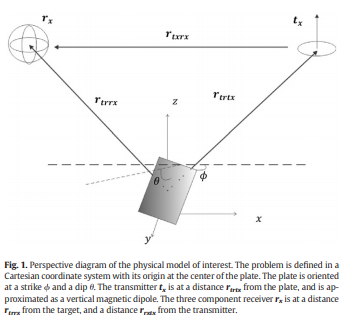Thu
30 Jul 2015The Total Component (or vector magnitude) and the Energy Envelope as tools to interpret airborne electromagnetic data: A comparative study
Authors: Jacques K. Desmaraisa, Richard S. Smithb
aEarth Sciences, University of Saskatchewan, 114 Science Place, Saskatoon, Saskatchewan S7N 5E2, Canada
bDepartment of Earth Sciences, Laurentian University, 935 Ramsey Lake Road, Sudbury, Ontario P3E 2C6, Canada
Abstract
This paper is a comparative study of the Energy Envelope and the T-component response for interpreting airborne electromagnetic (AEM) data. The Energy Envelope is the square root of the sum of squares of three component AEM data along with their Hilbert transforms, while the T-component response is a similar quantity, except without the Hilbert transform terms. These quantities can be used to determine approximate geometrical parameters of compact anomalous targets. The approximate parameters are useful for constraining automatic interpretation algorithms.
Synthetic examples are generated using a dipole conductor model. The synthetic models show that the Hilbert transform terms included in the Energy Envelope yield no additional benefits with regard to AEM data interpretation. Hence, the T-component response is a more efficient quantity for AEM modeling. The position of the peak of the T-component response can be used to estimate the position of a compact target that is consistent with the measured response. In particular for a MEGATEM configuration and when the target lies directly below the flight line and the line spacing of the survey is 200 m, the error in predicting the position of the target is under 200 m. This error is improved in situations where the conductor is at an offset to the flight line, or when the line spacing is decreased. The strike of the conductor can also be estimated, as a series of peaks will align along the strike direction.
Once the position and strike of the conductor is known, look-up-tables are generated for these specific parameters. The look-up-tables can be used to determine the depth and dip of the target. The depth can be estimated from the full width at half magnitude of the T-component response. The dip can be estimated from the asymmetry of the T-component response. Tests over the Chibougamau field site yield results in reasonable agreement with previous work of the same authors.





